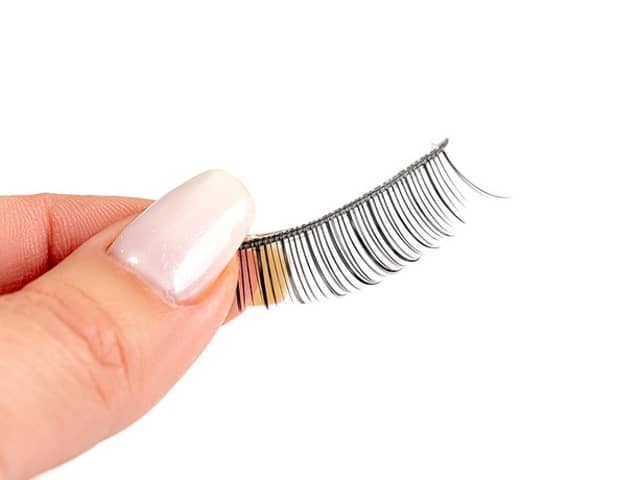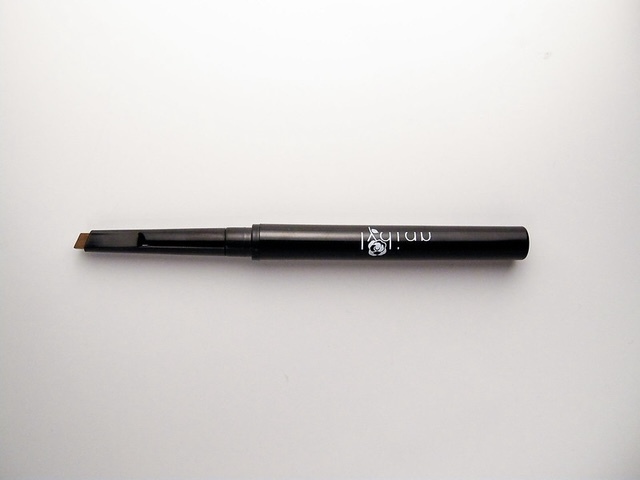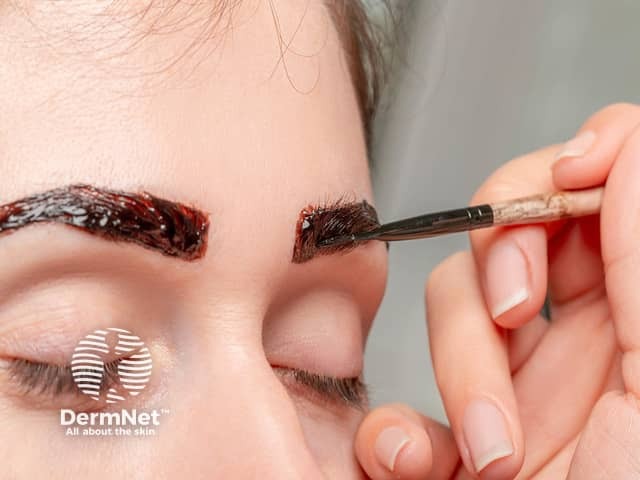Main menu
Common skin conditions

NEWS
Join DermNet PRO
Read more
Quick links
Author: Isabelle Nicholls, Foundation Doctor, Addenbrooke’s Hospital, Cambridge, UK. Medical Editor: Dr Helen Gordon, Auckland, New Zealand. DermNet Editor in Chief: Adjunct A/Prof Amanda Oakley, Dermatologist, Hamilton, New Zealand. Copy edited by Gus Mitchell. August 2020.
Introduction Demographics Contraindications More information Benefits Disadvantages Side effects and risks
False eyelashes and eyebrows are products used to enhance or replace natural lashes and brows. Approaches include the use of pencils, tattoos, strips of false eyelashes or eyebrows, and individual lash extensions.

False eyelash

Eyebrow pencil

Painting on eyebrows with henna
False eyelashes and eyebrows are very popular amongst the general public to enhance appearances but can also be a very valuable resource for individuals with alopecia and hair loss. For example, in trichotillomania, where the individual has a compulsion to pull their hair out, false eyelashes may be useful to disguise this. [1]
There are no strict contraindications for the use of false eyelashes and eyebrows, however obvious situations where avoidance is advisable to include previous allergic reactions to eyelash glue. For example, some glues used contain latex, therefore individuals with a sensitivity to latex should find an alternative product [2]. Case reports of allergic contact dermatitis have also been noted with acrylate-containing glue used for false eyelashes [3]. Furthermore, eyelash and eyebrow tinting products may contain compounds that cause allergic or irritant dermatitis similar to reactions seen with hair dyes. Individuals who have previously experienced reactions to these allergens should, therefore, avoid using products containing them.
It is also advisable to temporarily avoid false eyelashes during eye infections like conjunctivitis and styes (hordeolum) to limit irritation and the spread of infection.
For eyebrow microblading, technicians advise that individuals prone to keloid scarring avoid microblading entirely. This is because the technique involves making multiple small cuts to the skin, therefore risking the development of keloids.
Listed below are some of the various options available to individuals who want to enhance or replace their eyebrows and eyelashes [4].
The benefit of false eyelashes and eyebrows is that they can enhance or replace an individual’s features, which as a result, can help a person feel more confident.
As is the case with any cosmetic procedure or product, false eyelashes, and eyebrows cost money. This cost can be quite considerable, for example, microblading can cost upwards of £200 (NZ$400).
Another disadvantage of false eyebrows is that the tattoos often fade and require repeat sessions to maintain the effect.
Finally, depending on the product used, false eyelashes and eyebrows may not be suitable for every activity for example exercise and swimming. Individuals who use these products may feel the need to limit their activity to preserve the effect or prevent false eyelashes falling off.
Complications associated with the use of false eyelashes include [5]:
There is also a risk of infection, although to a lesser extent, with eyebrow microblading as small cuts are made to the skin in order to apply the pigment. It is also possible to develop an allergic reaction to the pigment/dye used. Otherwise, eyebrow products, such as pencils and powders, carry minimal risk.